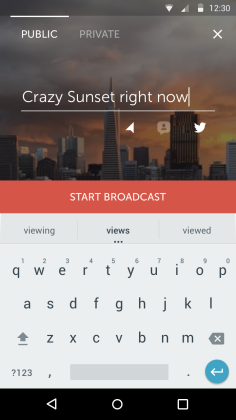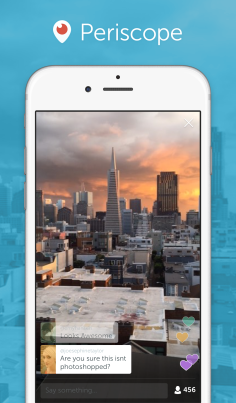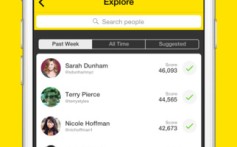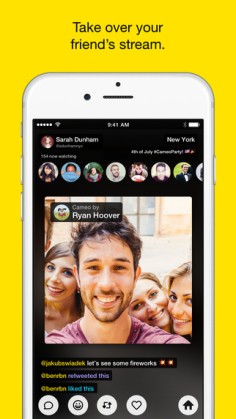Wish you were here? How live-streaming apps like Meerkat, Periscope can revolutionise your holiday experience
Apps such as Meerkat and Periscope mean you can broadcast live to friends from your vacation, live-stream a restaurant review to a travel website, or try before you buy a cruise trip or a stay at a hotel

Creating and sharing live video broadcasts was all the rage on social media earlier this year when first Meerkat and then Periscope, became the must-have apps of the moment. Months later the initial buzz has waned; who really wanted to see a ‘tour of the office’ or a ‘meet the family’ video anyway?
It is among tourists and travel industry workers that broadcasting live video to followers on social media appears to have the most staying power. Why describe a place or review a hotel room in words or photographs when a live video is just as easy? Why read about a place when you can see it? Why look at an atlas when you can use a virtual map that shows exactly who is live streaming, and from where?
“Depending on my location I’ll use Periscope to show my readers how to do something,” says Erick Prince-Heaggans, a travel blogger who broadcasts on Persicope regularly from @minoritynomad on Twitter. “For example, how to negotiate in Siem Reap, or use the train system in Bangkok … I try to use Periscope to teach people, rather than have them just look at my life.”
WATCH an explanation of what Periscope can do

However, there are still technical barriers to using live streaming apps widely. “The problem is Wi-Fi and internet around the world,” says Prince-Heaggans, who nevertheless loves the instant feedback and questions during and after his Periscope broadcasts. “In some places it’s hard to get a signal, which can make it problematic and expensive.”

Prince-Heaggans thinks that Periscope needs to start making some deals with data companies like World Sim to make it easier. “Streaming apps are the future of social media, and the travel industry should be using them.”
Live streaming can serve as a great source of inspiration, but so far there have been only flirtations from those who sell travel. Flights website Skyscanner did a 24-hour Periscope activation to give tips about places around the world to visit, while in July, Hong Kong’s Harbour City mall used Periscope to broadcast a ‘Where’s Wally?’ marketing campaign.
The differences between Periscope and Meerkat make one attractive to marketers, and the other to travellers. “Periscope allows you to watch videos 24 hours after filming, as well as [in] real time, while Meerkat only offers real-time viewing,” explains Dan West, senior digital strategist and innovations manager at the New Zealand office of advertising agency network FCB.

On Persicope, there’s thus a greater chance of people viewing your live stream than on Meerkat, which can’t be used with Twitter and whose videos are live-only.
Despite some interest from marketeers, the future of “scoping” or “katting” is probably rough and ready. “TripAdvisor could do something smart with real-time reviews,” says James Chandler, global mobile director at media agency Mindshare. “Most feedback and comments are written post-trip, so it could be interesting to do them in the moment as a stream.” Chandler also suggests that these apps could quickly replace static web camera feeds.

Though Facebook has so far stopped short of allowing live streaming, the Ice Bucket Challenge in July and August 2014 on Facebook saw over 2.4 million videos uploaded to the platform – mostly from first-timers – while the popularity of Snapchat (where messages expire after a few seconds) suggests an appetite for unrehearsed, unscripted and unrecordable content over the carefully curated social media profiles that the likes of Facebook encourage.
“Social media is a show – we all put our best selves on display,” says Prince-Heaggans. “We edit, adjust, and censor ourselves, but Periscope removes all of that. You say it and it’s in the air.”

Periscope and Meerkat remain experimental, but they’re on-trend. “Why Snapchat has worked is that it’s ‘filterless’ and a real-life moment in time, without all the trimmings, so there’s an opportunity for Meerkat and Periscope to tap into that,” says Chandler.
However, is live-streaming video from around the world really what we all want, even if we do get to see exotic locations? “If Netflix has taught us anything it’s that we like to watch when we want to watch, and we like to binge,” says West, who nevertheless thinks Periscope and Meerkat could bring something revolutionary to the travel industry.
“You can try before you buy in pretty much any industry bar travel,” says West. “Perhaps next time you go on a long vacation, you’ll know just what to expect.”